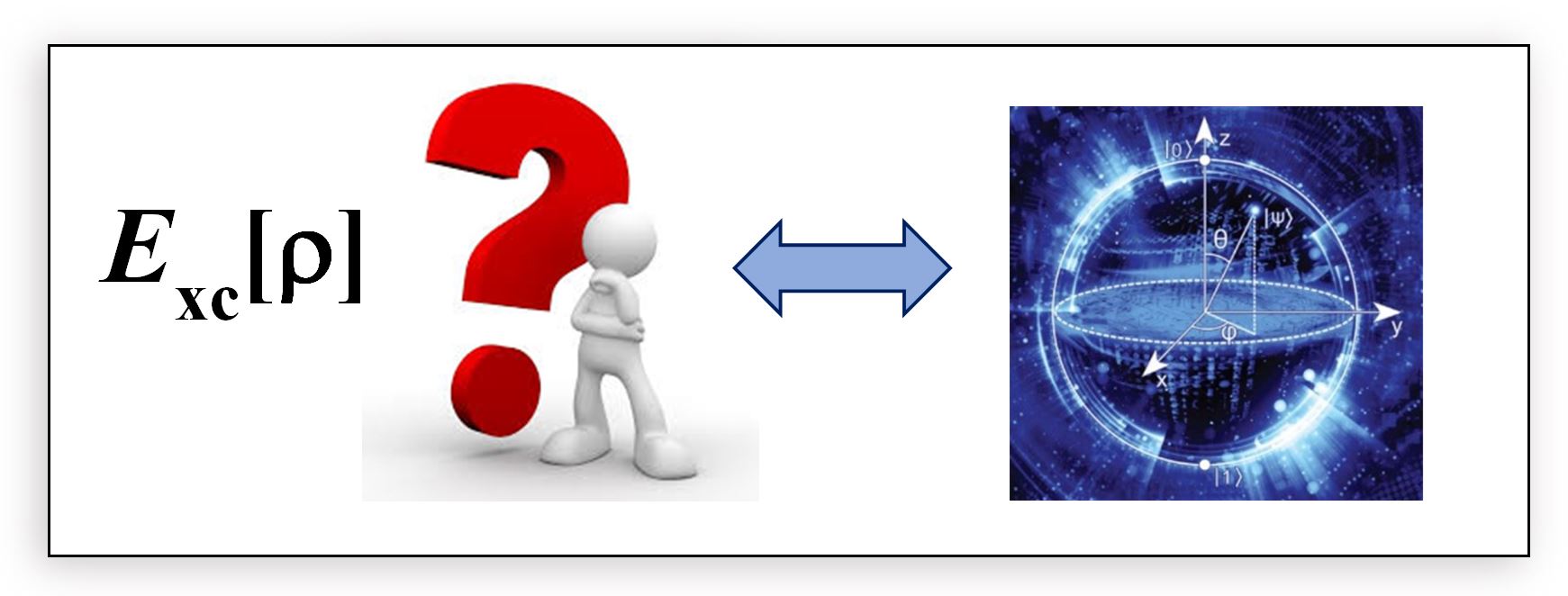Project Descriptions
1. Quantum chemistry
Supervisor: Prof. Susan Atlas (Chemistry & Chemical Biology), Lab Webpage.
Research Overview. Prof. Atlas’ lab conducts research in theoretical and computational chemical physics, aimed at understanding complex systems through a combination of formal theory, novel algorithms, and multiscale modeling. Ongoing research projects include the development of ensemble charge-transfer potentials for atomistic simulation; density functional theory (DFT) electronic structure calculations and machine learning methods for modeling high-entropy materials; kinetic modeling of proteins; and the application of DFT-based atom-in-molecule methods for encapsulating electron correlation effects in molecules.
QU-REACH Project. QU-REACH students will work on an ongoing project to implement density functional theory (DFT) electronic structure calculations on current-generation “noisy intermediate scale quantum” [NISQ] and emerging fault-tolerant quantum computers. DFT bypasses the need to solve the Schrödinger equation for the complicated many-electron wavefunction Ψ, by re-expressing the electronic structure problem in terms of a much simpler set of coupled one-electron equations for the electron density ρ. All of the underlying complexity of the quantum mechanical interactions between electrons is encoded within a “universal exchange-correlation functional”, Exc[ρ] entering the single-particle equations. The goal of this project is to explore alternative models of Exc[ρ], and determine whether the DFT formulation of quantum mechanics can provide both improved accuracy and greater robustness to noise in computing the ground state energies of molecules on quantum computers.
What the Students Will Do. Students will perform reference electronic structure calculations using different families of exchange-correlation functionals and Schrödinger equation-based quantum chemistry methods on the GPU supercomputing clusters at the UNM Center for Advanced Research Computing (CARC). Corresponding computational experiments with the same functionals and quantum chemistry methods will be performed on quantum computers. The calculations will utilize existing routines written in the Python-based Qiskit and PySCF electronic structure codes. The objective is to compare classical and quantum computer performancewith varying topologies and noise characteristics.
Supervision. The students will be supervised through frequent 1-1 meetings with Prof. Atlas, and will participate in weekly group meetings and the weekly group journal club.
Questions? Email: susier@unm.edu
2. Nanophotonic materials and devices for quantum light generation
Supervisor: Prof. Viktoriia Babicheva (Electrical & Computer Engineering), Lab Webpage.
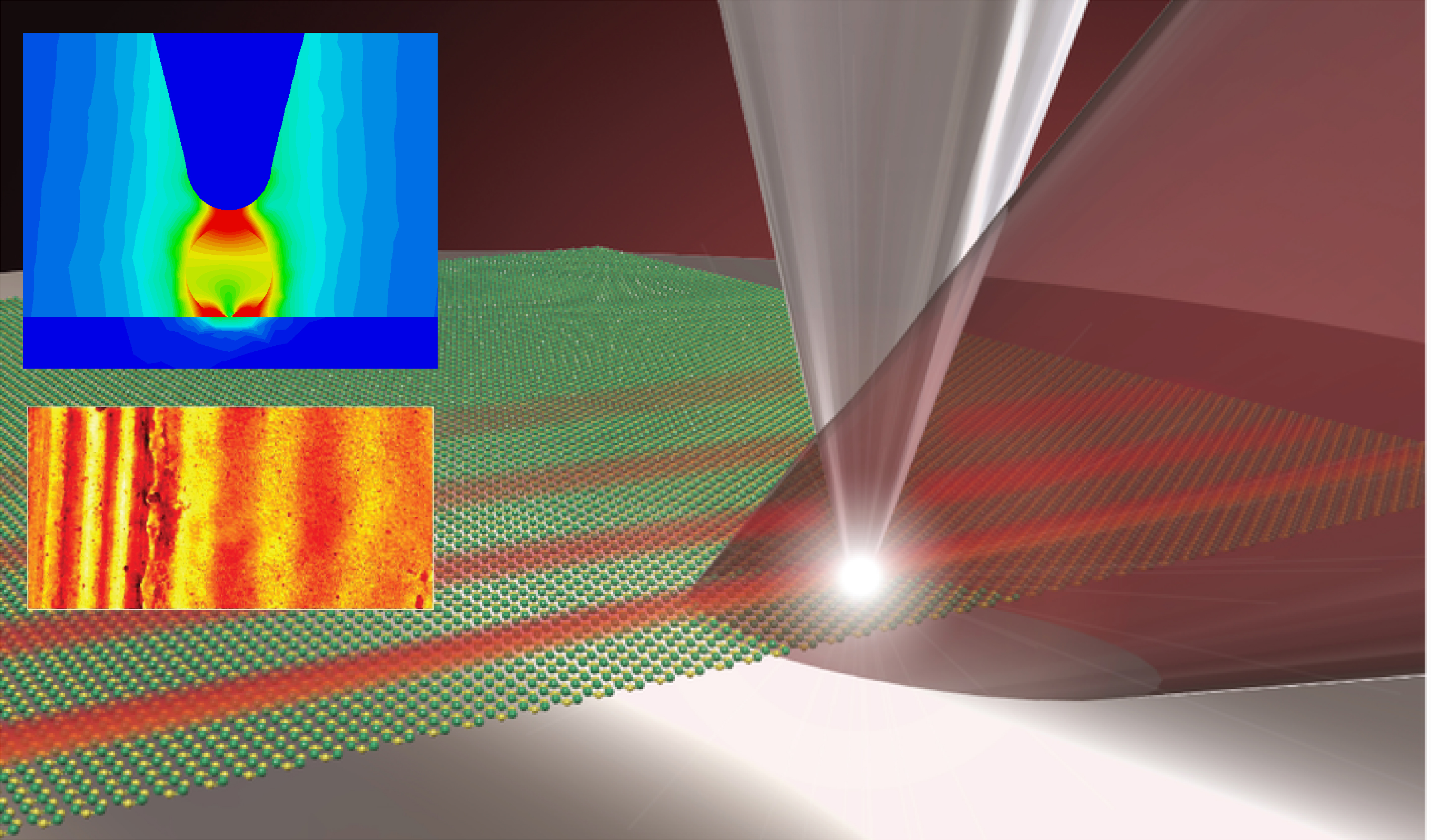
Research Overview.Prof. Babicheva's research interests cover both fundamental and applied aspects of optics and photonics. The research program focuses on resonant nanostructures, aiming to achieve efficient single-photon emitters and dynamic tuning of nanophotonic elements. Recent projects include developing hybrid metal-semiconductor designs with layered transition metal dichalcogenides, graphene, and other van der Waals materials. The nanostructures are designed to be applied in visible, infrared, and terahertz ultra-compact devices.
QU-REACH Project. The student will work on an ongoing project focused on developing material processes and realizing nanostructures for solid-state single-photon emitter platforms. The emitters will be engineered to enable controlled generation and manipulation of nonclassical light, including precise control over emission wavelength, polarization, and radiative rates. To open new opportunities for single-photon emission and integration with photonic circuits, two-dimensional materials will be combined with other functional materials to form multifunctional heterostructures with tailored optical and electronic properties.
What the Student Will Do.The project activities focus on the development and optimization of photonic nanostructures for solid-state single-photon sources. The work will involve design and performance analysis of nanoscale architectures using advanced electromagnetic tools, enabling predictive control over light–matter interactions and emission properties. Computational platforms will be employed to support data analysis, interpretation, and visualization throughout the project. The research will leverage state-of-the-art nanotechnology infrastructure and materials capabilities to refine device performance and ensure compatibility with scalable photonic platforms.
Supervision. Daily supervision will be provided by Prof. Babicheva and the graduate students working in the lab. The student will participate in weekly group meetings, during which the research progress of lab members is discussed.
Questions? Email: vbb@unm.edu
3. Quantum dot single photon sources at telecom wavelengths
Supervisor: Prof. Ganesh Balakrishnan (Electrical & Computer Engineering), Lab Webpage.
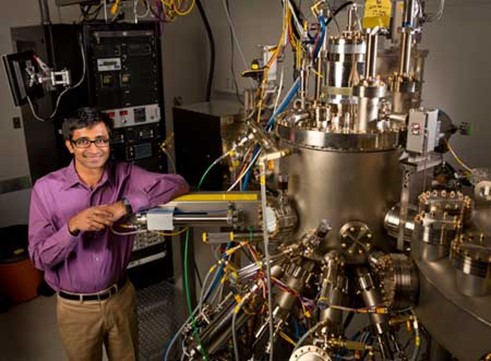
Research Overview. Balakrishnan’s research involves the epitaxial growth of III-V compound semiconductor materials and devices. This includes the development of InAs based quantum dots using molecular beam epitaxy. In particular, the group is currently working on low density quantum dots in the near IR that can be used as single dot emitters. This work also includes strategies to extend the emission wavelength of the dots to reach 1.3 and 1.55 µm on GaAs substrates.
QU-REACH Project. The project as mentioned above will target the growth of long wavelength InAs quantum dots. This will be done through the incorporation of antimony in the dots to realize InAsSb quantum dots. The project will involve the growth of such dots on state of the art MBE reactors and subsequent characterization using X-Ray diffraction, atomic force microscopy and photoluminescence studies.
What the Student Will Do. The student will gain experience in optics, vacuum science, cryogenics and material science. The student will be able to work with a highly experience epitaxial scientist to grow samples. These samples will then be characterized using photoluminescence and microscopy to establish quantum dot parameters such as photoluminescence, dots size and shape and antimony incorporation values.
Supervision. The student will work with a highly skilled team of epitaxial scientists including faculty, postdoctoral researchers and graduate students. There will be regular meetings for the group which the student will also attend.
Questions? Email: gunny@unm.edu
4. Superconducting readout development for cosmic microwave background surveys
Supervisor: Prof. Darcy Barron (Physics and Astronomy), Lab Webpage.
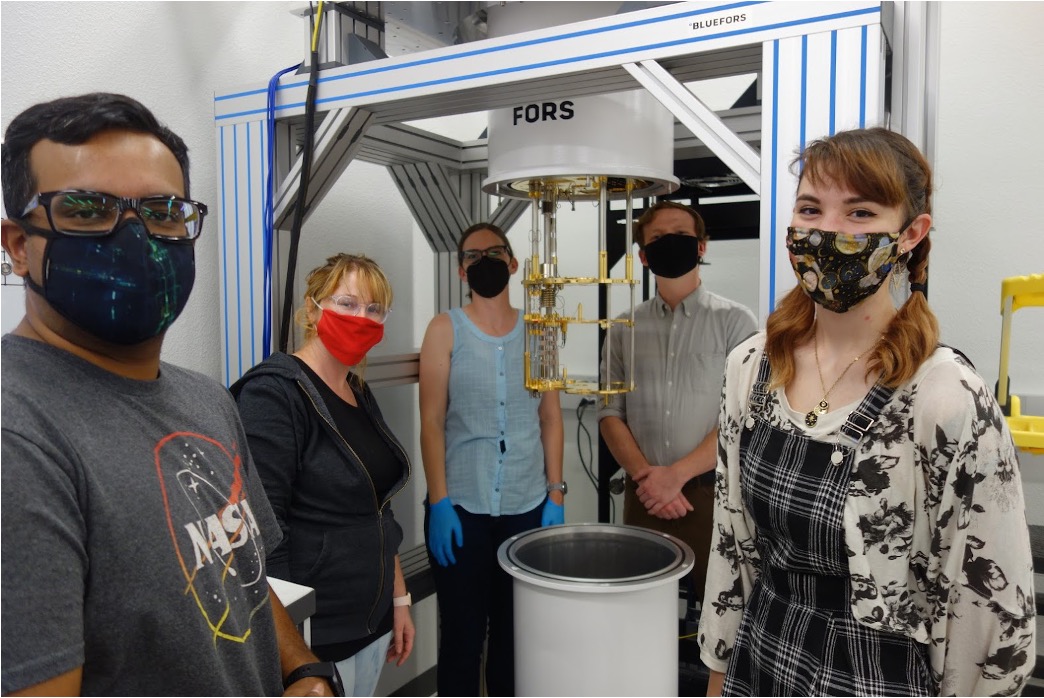
Research Overview. Barron's group works on developing instruments and creating datasets to better understand our universe. Their current focus is on measuring the polarization of the cosmic microwave background (CMB). These CMB instruments use superconducting detectors and readout systems to make precision measurements of the microwave sky.
QU-REACH Project.This summer’s QU-REACH project will focus on testing of prototypes for a new superconducting readout system for CMB telescopes. These sensitive devices must be carefully tested at temperatures near absolute zero, and results are compared with expectations and requirements.
What the Student Will Do.The student will assist in testing and characterization of devices, which includes operating a dilution refrigerator system as well as custom electronics. The student will also assist in calculations including estimates of thermal, electrical, and mechanical properties. As part of this project, the student will learn about the design of the detector and readout system and techniques for testing and characterization of devices used in it, including transition edge sensors and superconducting quantum interference devices (SQUIDs). This also includes background in circuits, electronics, cryogenics, and thermometry, as well as applied skills in instrumentation and programming.
Supervision.The student will participate in weekly meetings with the full research group, where progress and problems on various projects will be discussed. They will also have regular one-on-one meetings with the PI to discuss progress and goals. Daily activities including labwork and analysis projects will be supervised by graduate students working on related projects.
Questions? Email: dbarron2@unm.edu
5. Quantum measurements, metrology, and communications
Supervisor: Prof. Elohim Becerra (Physics & Astronomy), Lab Webpage.
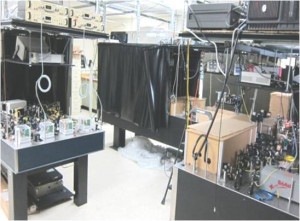
Research Overview. Becerra’s lab performs research in quantum information with atoms and photons, with a focus on the study of quantum properties of light and matter for optimal methods of measurement, information transfer and communications. Their interests include the study of measurements with sensitivities beyond conventional limits of detection, and the study of quantum-state superpositions from the interaction of light and matter for quantum information and communication protocols. They are interested in studying technologies that can be enabled by these quantum systems and understanding the limits of such quantum technologies. Applications of these studies include quantum and coherent communications, metrology, and quantum information processing.
QU-REACH Project. The project will support research in quantum measurements for applications across metrology, sensing, communication, and/or imaging. Quantum mechanics provides an understanding of the limits of current metrology technologies, and the possibility for building protocols to circumvent the conventional measurement limits. How to build experiments to demonstrate these protocols is the focus of our research.
What the Student Will Do.The student(s) will develop skills in optics, photonics, electronics, programming, and will extensively interact with researchers in the quantum optics laboratory working on quantum measurements, atomic physics, and quantum communications. They will work in close collaboration with students and the PI in the development of one of this platforms.
Supervision. The student(s) will participate in weekly group meetings, during which progress of each group member is discussed. Daily supervision will be provided by the Prof. Becerra and graduate students in his lab.
Questions? Email: fbecerra@unm.edu
6. Sub-Kelvin Cooling Using Magnetism
Supervisor: Prof. Stephen Boyd (Physics & Astronomy), Lab Webpage.
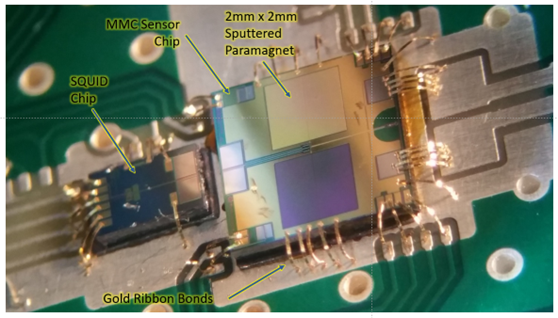
Research Overview. Boyd's lab explores the interplay of photons, elementary particles, magnetism, and superconductivity, at temperatures near absolute zero, to develop new measurements and experimental techniques. Low temperatures and quantum coherence give us a powerful experimental toolkit, and we are currently pursuing research in several different areas: developing Superconducting QUantum Interference Devices (SQUIDs) for a JAXA satellite to measure the cosmic microwave background, developing magnetic microcalorimeter radiation detectors for the International Atomic Energy Agency, and developing a novel magnetic cooling approach to keep quantum computers near absolute zero.
QU-REACH Project. One QU-REACH student will work on our ongoing magnetic cooling project, which has the preliminary goal of demonstrating a single “high” temperature cooling stage operating between 3K and 1K. This project proceeds as a series of tabletop experiments (although the “table” is at 4K!), so it’s an excellent learning opportunity for an undergrad student to learn about and participate in most aspects of an experimental project: modeling, experiment design and fabrication, measurement planning and control, and running the experiment.
What the Student Will Do. The student will learn basic techniques for experimentation at ultra-low temperatures and basic concepts of thermodynamics applied to paramagnetic systems at low temperatures. Depending on the student’s experience and interests, the student will work with research faculty in one or more of these areas: modeling, experiment design and fabrication, and measurement planning and control. The student will gain experience communicating results in group meetings, and, depending on the direction chosen, the student will gain experience with any of COMSOL, SolidWorks, LabView, MatLab, and/or Python, all valuable tools in experimental research.
Supervision. The students will be supervised through weekly 1:1 meetings as well as daily interactions in the lab with Boyd and research faculty member Luke Emmert.
Questions? Email: stpboyd@unm.edu
7. Piezoelectric optical filters and quantum fabrication
Supervisor: Prof. Tito Busani (Electrical & Computer Engineering),
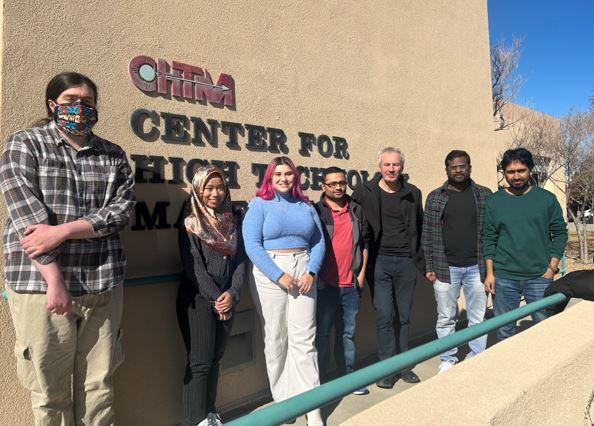
Research Overview. The quantum fabrication, metrology, and opto-mechanics lab at CHTM focuses its research on atomic precision lithography and metrology and heterogenous integration that incorporates multiple components, such as modulators frequency shifters, filters, delay lines, and photodetectors. Busani's group works on converting RF signals to photonics on chip, then to phononics for processing, back to photonics for additional routing, and then back to RF via photodetection. Thus, the group leverages the mainstay components of a Si photonic platform, while incorporating the advantages of using high frequency phonons, technology that, for example, is currently deployed for filtering in modern systems such as cell phones. Moreover, they provide a state of the art for a single atom lithography combined with UV lithography and spectroscopy.
QU-REACH Project. a QU-REACH student will work on research to integrate the existing UV Photoluminescence into an Atomic Microscope System.
What the Students Will Do. The QU-REACH student will work with one of Busani's PhD students on UV data acquisition and validation using both the UV Photoluminescence and Atomic Force Microscopes. Labview will be used to remotely control the acquisition system. It is also expected that the student will learn how to use basic optics simulation software and help the PhD student with waveguide fabrication in the cleanroom.
Supervision. The student will work closely with Dr. Busani's senior PhD students and will have a weekly meeting with the group and/or 1:1 Meeting with Dr. Busani. Moreover, the student will provide bi-weekly progress reports in the form of slide presentations.
Questions? Email: busanit@unm.edu
8. Silicon Carbide Quantum Photonics
Supervisor: Prof. Sakineh Chabi (Mechanical Engineering), Lab Webpage.
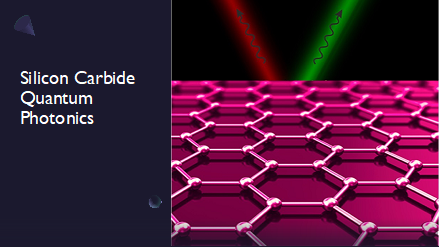
Research Overview. Prof. Chabi's Lab is involved in pioneering research projects at the intersection of nanotechnology, semiconductors, and renewable energy. Currently, they conduct extensive research on silicon carbide (SiC) nanotechnology, including material growth and characterization, electrical, optical, and magnetic measurements, and device fabrication. Specifically, the group is focused on silicon carbide quantum photonics. They aim to understand how shifting from bulk SiC to low-dimensional SiC affects single-photon quantum emission in these materials.
QU-REACH Project. The QU-REACH project studies single-photon quantum emitters in low-dimensional silicon carbide and other related materials i.e. SixCy materials. Students will also research spin defects and the magnetic properties of silicon carbide nanomaterials.
What the Student Will Do. Students will be involved in the synthesis and characterization of materials, as well as the optical and magnetic investigation of the grown materials.
Supervision. Students will meet regularly with Prof. Chabi and collaborate closely with other graduate and undergraduate students, as well as collaborators from the Center for Integrated Nanotechnology
Questions? Email: schabi@unm.edu
9. Nanofabrication of Multifunctional Materials for Quantum Bulk Acoustic Resonators
Supervisor: Prof. Nathan Jackson (Mechanical Engineering), Lab Webpage.
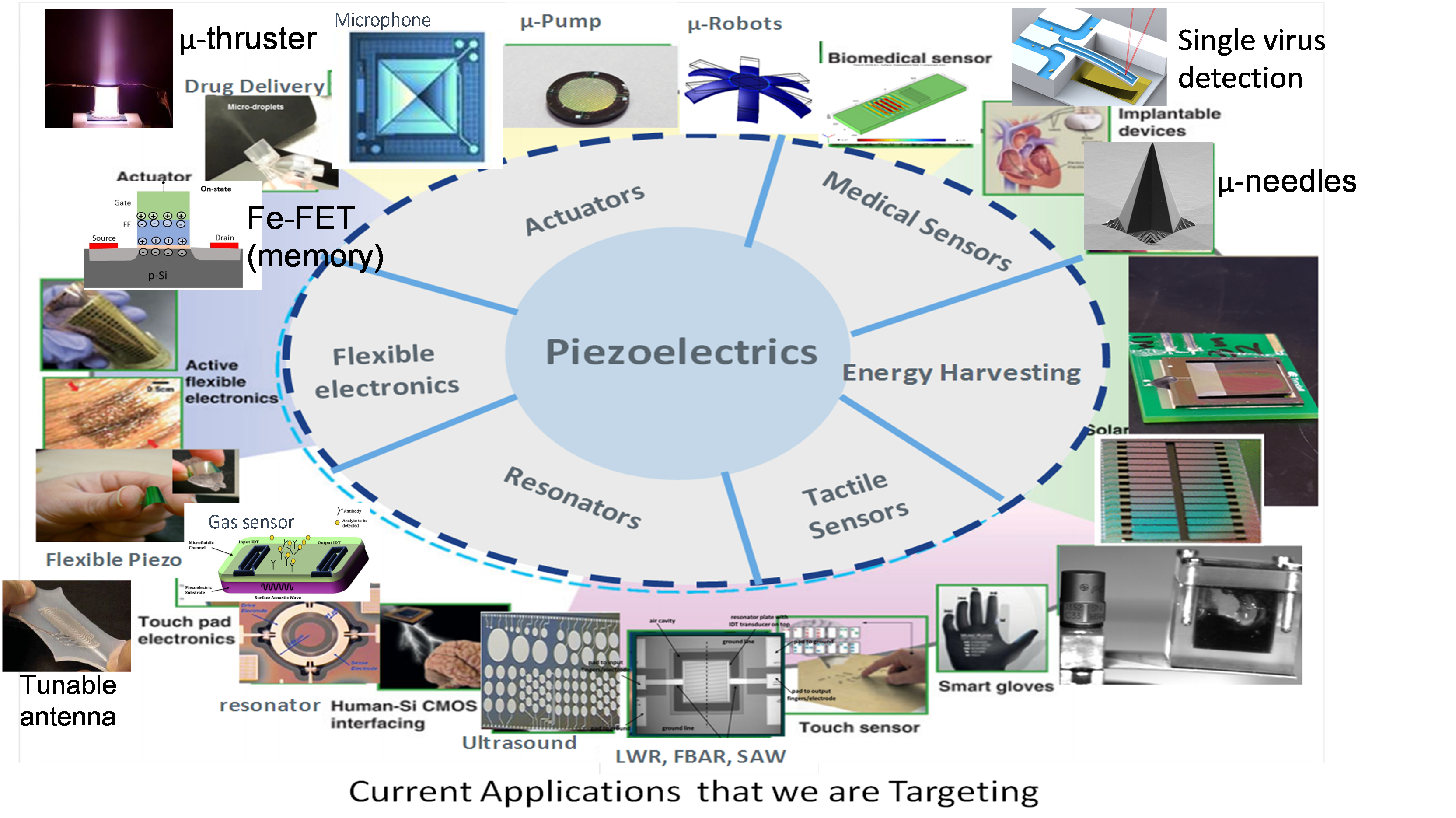
Research Overview. Jackson’s research is very interdisciplinary and involves developing new functional and multifunctional materials, nanofabrication, and integration of these materials into microsystems devices and systems. Applications for these devices includes but not limited to: energy harvesting, aerosol generation, biosensors, flexible/stretchable electronics, acoustic resonators, and advanced manufacturing.
QU-REACH Project. A QU-REACH student will contribute to the development of multifunctional materials and integration of the materials using nanofabrication techniques. The project will focus on developing materials to be used in quantum bulk acoustic resonators which could ultimately be used with superconducting qubits, spin ensembles, optical photons and quantum memories. The acoustic resonators can also be used for numerous other applications including biosensing, RF Filters, and acoustofluidics.
What the Student Will Do. The student will learn the basics of nanofabrication including photolithography, etching, characterization of materials (mechanical, electrical, piezoelectric, and magnetics), as well as development of composite materials. The student will have the opportunity to learn about acoustic resonators and their applications as well as semiconductor manufacturing. The student will also have the opportunity to learn about computational Multiphysics finite element modelling if desired.
Supervision. The student(s) will participate in weekly group meetings, discussing progress and challenges. Daily supervision will be provided by graduate students and Postdoc’s.
Questions? Email: njack@unm.edu
10. Electron Transport and Optical Generation of Molecular Spin Qubits
Supervisor: Prof. Martin L. Kirk (Chemistry & Chemical Biology), Lab Webpage.

Research Overview. The Kirk Group has research effort in molecular electronics and quantum information science (QIS). The group specializes in using Donor-Acceptor biradical constructs to study molecular electron transport and optical generation and manipulation of electron spin qubits related to future technologies at the nanoscale. They employ a combination of spectroscopy, synthesis, and computations in their work. The group currently consists of eight members, which include undergraduate students, graduate students, postdocs, and a research associate professor.
QU-REACH Project. One or two QU-REACH students will study mono-radical to multi-radical systems to address specific questions related to molecular conductance and rectification, and also address excited state control of electronic and magnetic properties in new molecular multi-spin systems. These experiments employ a combined spectroscopic approach, augmented by computations. The combination of spectroscopy and theory lead to exciting learning opportunities for undergraduate students interested in working with a diverse community of researchers.
What the Student Will Do. The student(s) will use a combination of variable-temperature electronic absorption, resonance Raman, magnetic circular dichroism, time-resolved and steady state photoemission, and multifrequency electron paramagnetic resonance spectroscopies to probe electronic coupling relationships with molecular conductance, and the nature of multi-spin interactions in electronic excited states that facilitate electron spin polarization in the ground state. Together with Kirk lab members, the students will analyze these data, perform spectroscopic and electronic structure computations, and develop models for observed behaviors. Students will gain valuable experience in spectroscopy, DFT (ORCA, Gaussian) and configuration interaction computations, data collection and analysis (Mathematica, MatLab, and/or Python), and communicating their results at weekly group meetings. In addition to the Program's end-of-summer poster presentation, the students may present their work at a research conference and/or be a co-author in journal publications on their work.
Supervision. The student(s) will be supervised and attend a combination of weekly 1:1, sub-group, and group meetings on the project, as well as interactions with groups at CHTM, NC State University, and Los Alamos National Laboratories. Students will also work closely with Kirk Group members on these projects.
Questions? Email: mkirk@unm.edu
11. Measuring Positions and Separations of Single Molecules at the Quantum Limit
Supervisor: Prof. Keith Lidke (Physics & Astronomy), Lab Webpage.
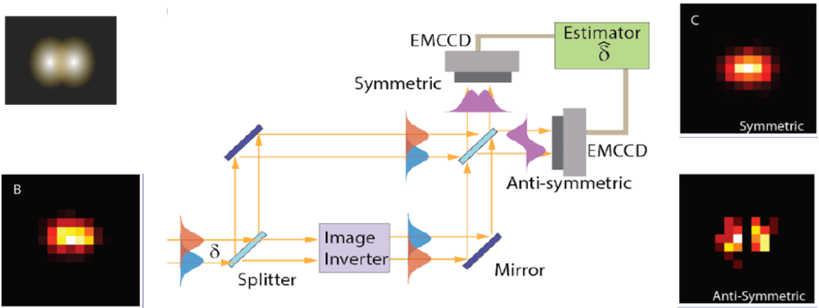
Research Overview. Measuring positions and separation distances are fundamental to many scientific disciplines such as astronomy and microscopy. Many mechanisms involved in the functioning of a biological cell are still poorly understood because they involve interactions at the nanometer scale - about two orders of magnitude below the diffraction limit of light microscopy. The Lidke ground develops new experimental and computational approaches for accessing this length scale. One method involves tagging cellular components with fluorescence molecules, which allows the concepts and approaches of quantum metrology for measuring positions and separations to be applied to biological systems at the subcellular level.
QU-REACH Project. A QU-REACH student will contribute to an ongoing imaging project that applies the quantum- optimal method of Super-Localization by Image inVERsion (SLIVER) to single molecule imaging. This project combines aspects of interferometry, phase stabilization, detection of light down to the single photon level, and both quantum and classical estimation theory.
What the Student Will Do. The student will learn basic concepts of (quantum) metrology including the (quantum) Cramer-Rao Bound, learn to use a microscope system designed for imaging single molecules, help align and characterize an interferometer and perform corresponding data analyses in MATLAB, Python, or Julia. The student will learn to use a standard fluorescence microscope and the technique of Single Molecule Localization Microscopy (SMLM). For a student interested in a more computationally-focussed project, there is opportunity to build a digital twin of the experimental system in order to study potential sources of noise and aberrations.
Supervision. The student will have daily interactions in the lab with Prof. Lidke, have dedicated weekly 1:1 meetings, and be included and participate in project meetings. They will also work closely with research staff and graduate students working on the project.
Questions? Email: klidke@unm.edu
12. Quantum algorithms in the presence of noise
Supervisor: Prof. Milad Marvian (Electrical & Computer Engineering), Group Webpage.
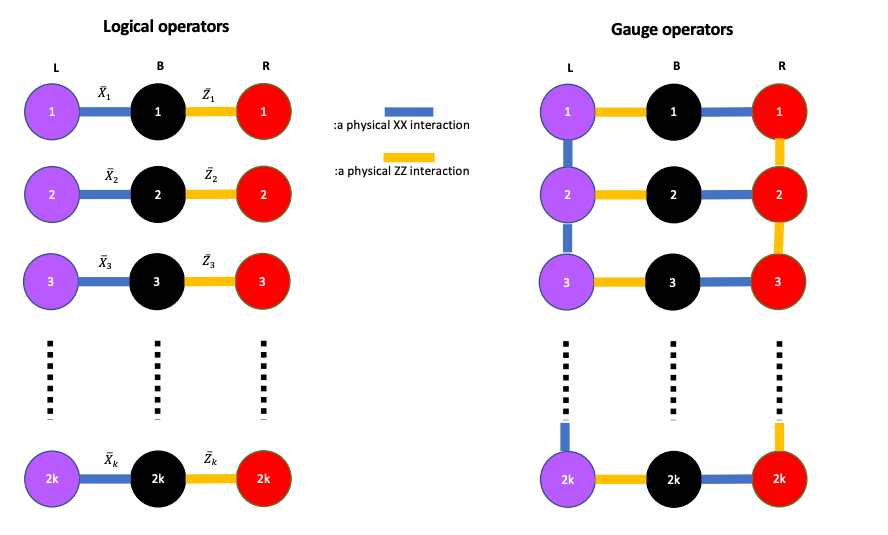
Research Overview. Marvian’s research focuses on the theoretical aspects of quantum computing, including quantum error correction, quantum algorithms, and Hamiltonian complexity. The current ongoing projects include the design and analysis of low-overhead error correction and fault-tolerant schemes; designing mathematical tools for quantum learning problems; and understanding the computational complexity of simulating quantum systems.
QU-REACH Project. The student will study the performance of small-size quantum codes under realistic noise models. This project is part of an ongoing effort in Marvian’s lab to study low-overhead error correction schemes.
What the Students Will Do. The student will gain basic knowledge of quantum computing, quantum noise, and quantum error correction. They will apply analytical techniques and perform numerical simulations to study the performance of small-size quantum codes under Markovian and non-Markovian noise.
Supervision. The student will have frequent 1-1 meetings with Prof. Marvian. In addition, the student will participate in the weekly group meeting and will work closely with a graduate student/postdoc.
Questions? Email: mmarvian@unm.edu
13. Charge dynamics in non-covalent supramolecular assemblies
Supervisor: Prof. Jean-Hubert Olivier (Chemistry & Chemical Biology), Lab Webpage.

Research Overview. At the intersection of supramolecular chemistry, physical organic chemistry, and materials science, the Olivier Laboratory develops supramolecular tools to engineer organic compositions equipped with structure-function properties not achievable by contemporary approaches. Specifically, we aim to modulate the excitonic and potentiometric properties of non-covalent assemblies. Our long-term goal is to establish rules and principles to optimize light-matter interactions, control energy flow across mesoscale dimensions, and delineate platforms enabling mechanical energy transduction.
QU-REACH Project. This project will target the characterization of electronically coupled non-covalent assemblies to elucidate the spectroscopic signatures of delocalized electrons and hole polarons. A particular emphasis will be placed on establishing structure-function relationships, which maximize charge carriers' delocalization.
What the Student Will Do. The student will learn the basics of electrochemistry and spectroelectrochemistry, which are techniques leveraged to probe the spectroscopic signatures of doped semiconductors. Furthermore, time-resolved spectroscopy will be exploited to characterize the excited state dynamics of the charged non-covalent assemblies. Data modeling will inform on the magnitude of the electron and hole delocalization.
Supervision. The student(s) will be supervised and attend a combination of weekly 1:1, sub-group, and group meetings on the project and interactions with groups at UT Austin and Montana State University. Students will also work closely with the Olivier group members on these projects.
Questions? Email: jholivier67@unm.edu
14. Silicon quantum photonic integrated circuits (SiQuPICs)
Supervisor: Prof. Marek Osinski (Electrical & Computer Engineering), Lab Webpage.
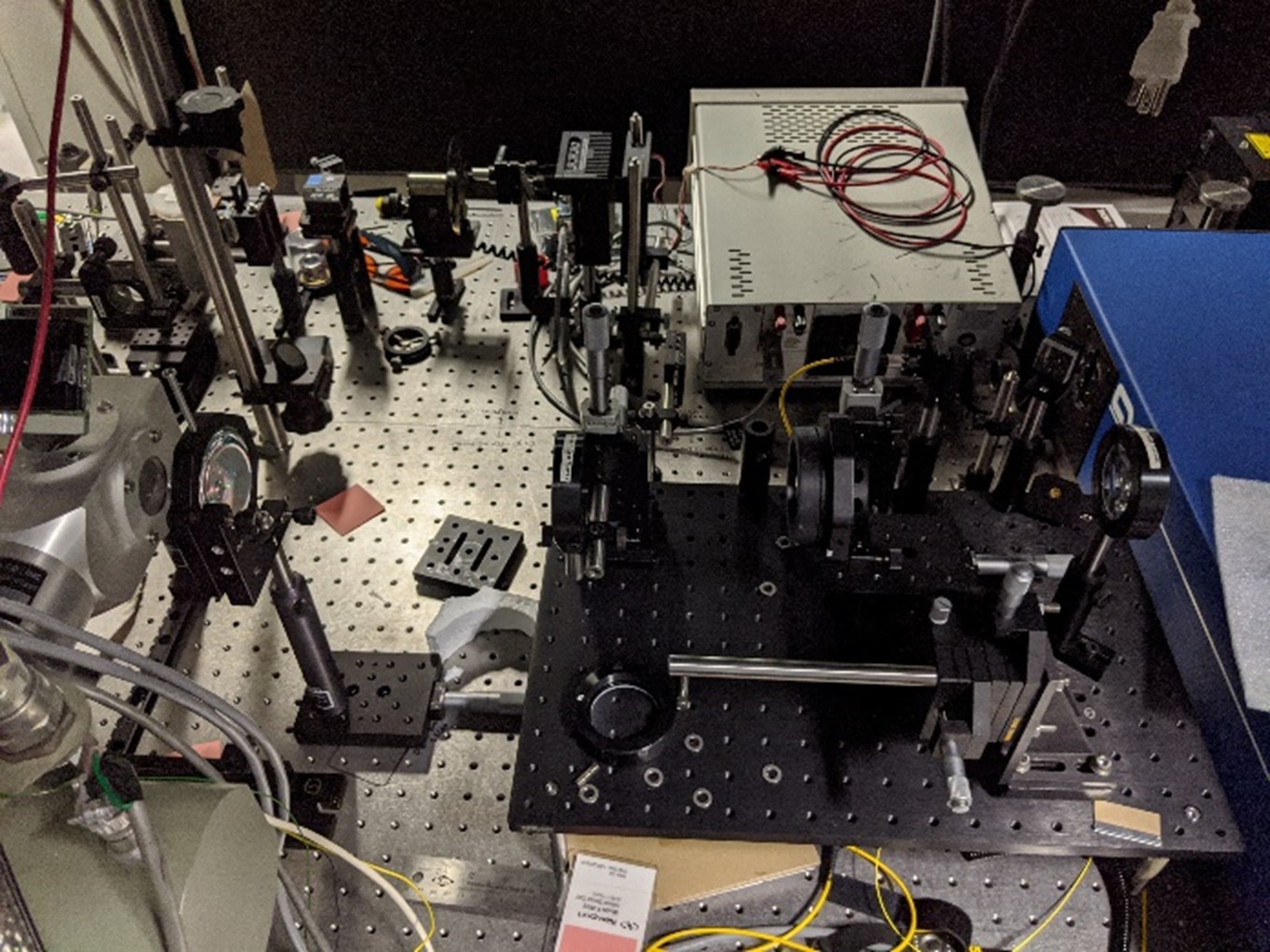
Research Overview. Osinski’s research spans a broad range of disciplines, from optoelectronics, nanotechnology, superconductors, and nuclear radiation detection to biomedical applications of colloidal quantum dots, neuromorphic computing, and quantum information processing. His group is highly interdisciplinary, providing unique opportunities for students studying physics, electrical and computer engineering, biomedical engineering, chemical engineering, optics, nanoscience, etc. to contribute and learn from each other in a research team environment. High-school, undergraduate, and graduate students are working of various projects, with multilevel mentoring up to postdoctoral. The group currently consists of 8 high-school students, 10 undergraduate students, 11 graduate students, one postdoc, and one senior research faculty.
QU-REACH Project. Under this project, the undergraduate student(s) will participate in development and integration of novel devices for the generation, manipulation, propagation, and detection of single- and entangled photons for quantum information processing as part of a larger team. The quantum photonic integrated circuits are implemented in a silicon photonics platform that can be used in future large-scale quantum communication networks. This project brings together expertise in materials science and engineering; semiconductor fabrication, processing, and devices; superconducting device physics; classical nonlinear and quantum optics; and optical communications to solve technical challenges for the development and realization of a scalable integrated quantum communication platform. Most of the fabrication will be conducted at the Center for Integrated Nanotechnologies (CINT), a user facility located in Albuquerque and operated jointly by Sandia National Laboratories and Los Alamos National Laboratory.
What the Student Will Do. The activities under this project include design, fabrication, and characterization of single-photon and entangled photon pair sources, gate-defined quantum dots, superconducting nanowire single-photon detectors (SNSPDs), and integrated waveguide channels to manipulate photons. The student(s) will gain experience in device simulation (Rsoft, Comsol, and Fortran), mask design for photolithography and e-beam lithography (AutoCAD), process development for SiQuPIC fabrication, use of various processing and characterization tools, conducting experiments in cryogenic environment (LabVIEW), data analysis and visualization (Mathematica, MatLab, Fortran, C/C++, Python, Origin), preparation of papers for publication, and presentation or results at group meeting.
Supervision. The student(s) will participate in weekly group meetings, during which progress of each group member is discussed. Daily supervision will be provided by the graduate students and the postdoc working on the project. Students working at CINT will be trained in the use of facility and specific fabrication tools.
Questions? Email: osinski@chtm.unm.edu
